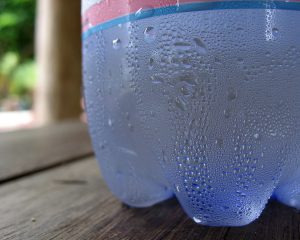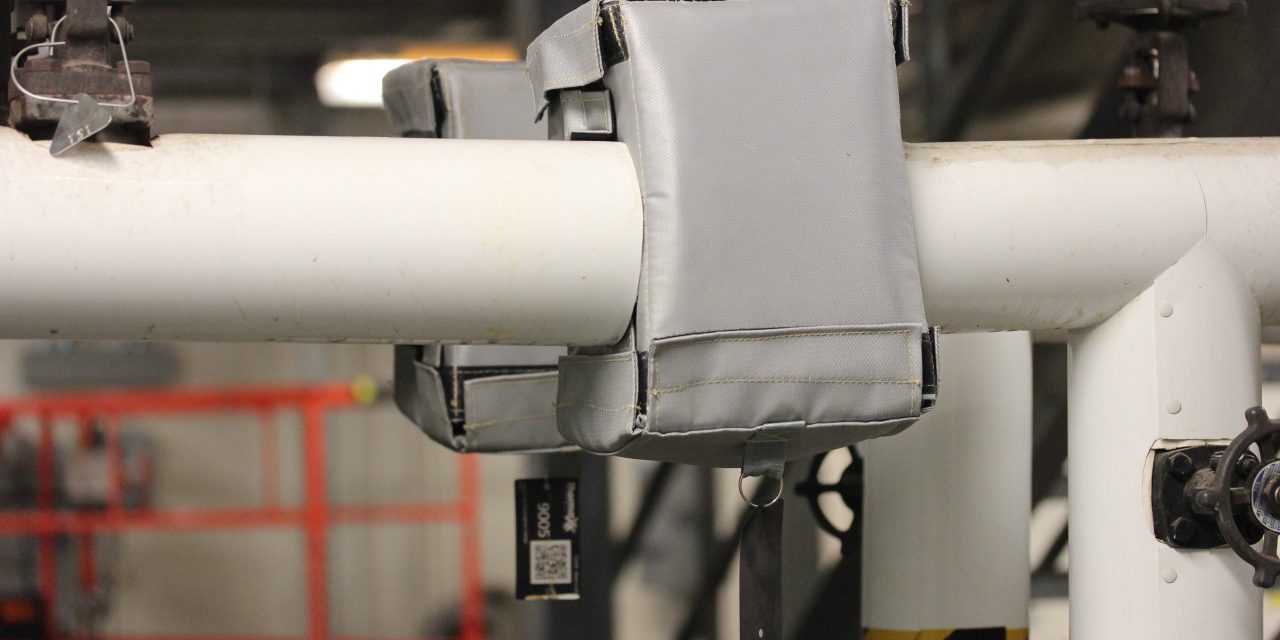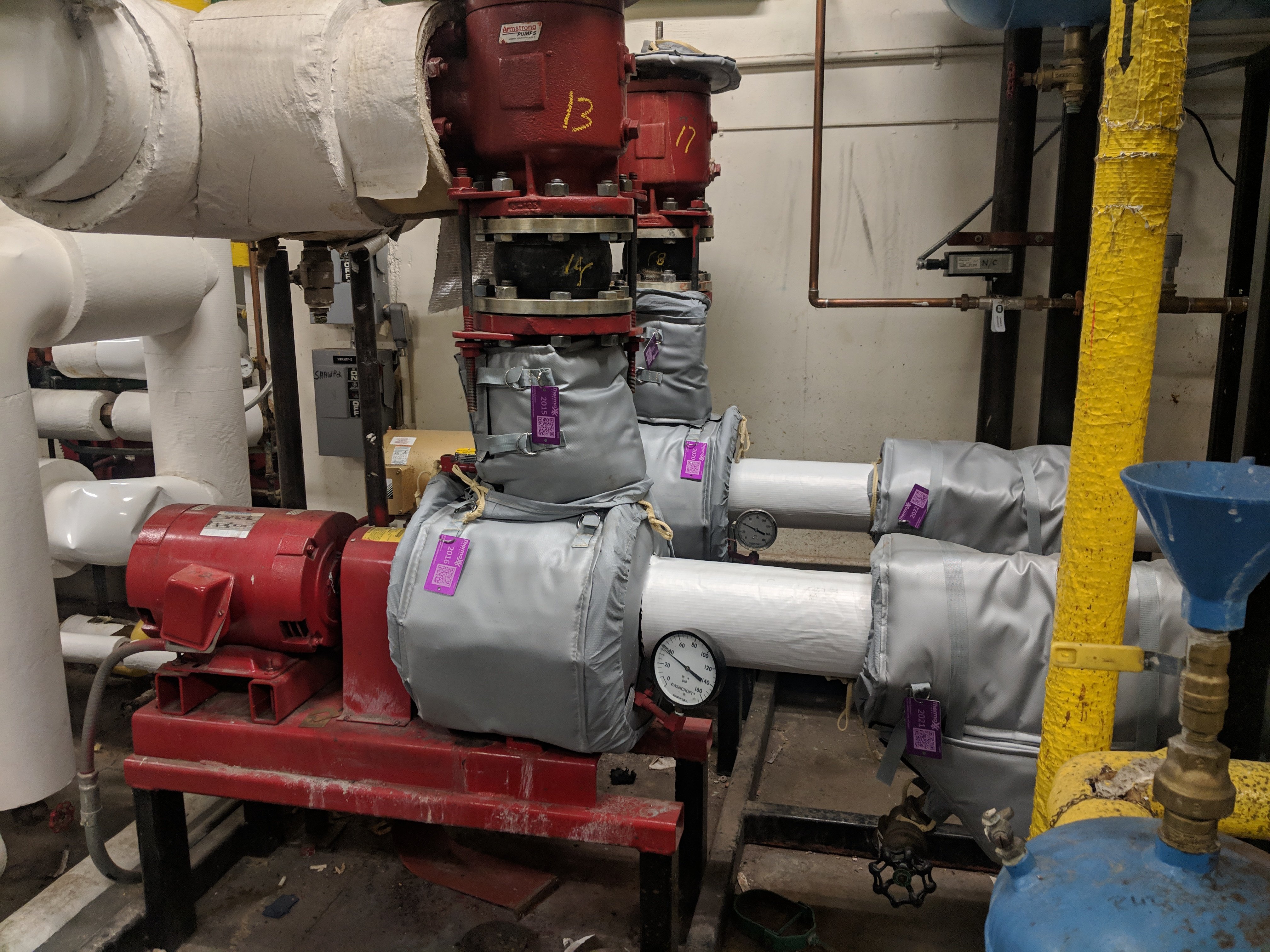Best Way to Prevent Cold Water Pipe Condensation or "Sweating"
In This Article:
- Why Do Pipes “Sweat”?
- Is It Normal for Pipes to Sweat?
- How Can You Tell if You Have Sweating Cold Water Pipes or Leaking Ones?
- Risks & Dangers of Condensation Caused Corrosion
- Why Traditional Insulation Methods Won’t Help Copper Pipes Sweating
- Where to Look for Condensation on Your Piping, Tanks, or Other Components
- What Areas of a Building Are Most At Risk for Sweating Water Pipes?
- Best Way to Sop Cold Water Pipe Condensation
- Best Insulation for Cold Water Pipes
- Can Hot Water Pipes Sweat?
- Contact Thermaxx
We often hear from clients facing a similar problem: condensation (or sweat) forming on their cold pipe or component. One may think it’s something that can be overlooked, but water can cause serious damage to sensitive piping or equipment if left untreated. Corrosion (the gradual destruction of materials, usually metals, by chemical and/or electrochemical reaction with their environment) can occur on the sweating pipe, and the equipment around it, leading to messy leaks and equipment failure. Moisture buildup can also cause mold or mildew to form, or create a slippery workspace. In this article, we will discuss the problem in depth and present our solution.
Why Do Pipes “Sweat”?
Pipes do not literally sweat, although it appears that way. The condensation that forms on the outside of a cold pipe or component is actually moisture from the air, not the pipe. Like a cold bottle of soda on a hot day, when humid air comes in contact with a chilled pipe or component the air loses its capacity to hold water vapor, as a result excess water forms into liquid water droplets on or near the cold surface. The condensation process affects piping and components year-round, as furnaces heat the air during the winter months.
Is It Normal for Pipes to Sweat?
Yes, it is normal for pipes to sweat sometimes. Sweating — or condensation — occurs when the cold water inside the pipes meets the warm and humid air inside the building. Since the cold water attracts moisture from the warm air, it condenses on the pipes.
Although some condensation is normal, prolonged excess moisture can lead to the breakdown of your pipes' integrity, which could cause mold growth and corrosion.
How Can You Tell if You Have Sweating Cold Water Pipes or Leaking Ones?
First, you should consider your pipes' location. Most pipes that sweat or form condensation are the ones most exposed to the moist, warm air of your buildings. If your pipes have condensation and are located outside or in a cool area, they might have a leak instead.
You can explore a few different tactics to determine if your pipes are leaking or sweating. First, try changing the humidity level of the area your pipes are located. One way to do that is by increasing ventilation, which you can measure with a hygrometer. If you can reduce the humidity, the condensation and sweating should stop. If there is still water pooling or dripping from your pipes, they are probably leaking.
Leaking pipes will also have rust or corrosion near the fittings. You can test for a leak using your water meter, which requires you to shut off the water in the system.
Risks and Dangers of Condensation Caused Corrosion
Components that drip condensation onto the floor cause a serious safety hazard to employees because a fall hazard or slip hazard is created. We all know that an employee getting hurt on the job is the last thing an employer wants to see. Abating this severe safety hazard is of utmost importance. Equipment that sweats and condensates poses a serious corrosion risk to the integrity and safety of your equipment and facility as well. The risks begin when moisture comes into contact with your equipment, particularly if it’s made of metal, iron, or steel. The thickness of your metals can be reduced by corrosion, which could lead to structural failure. Even minor cracks in piping and equipment can pose a contamination risk to processes occurring beneath the piping, and to the fluids inside.
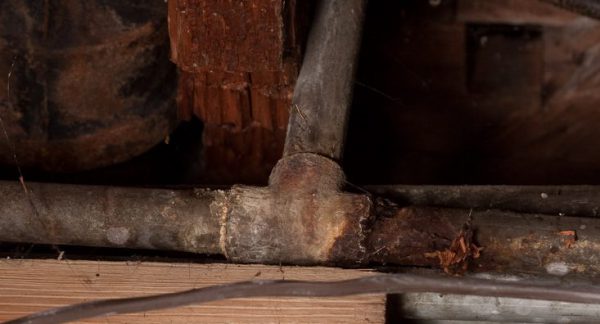
Equipment that sweats and condensates poses a serious corrosion risk to the integrity and safety of your equipment and facility as well. The risks begin when moisture comes into contact with your equipment, particularly if it’s made of metal, iron, or steel. The thickness of your metals can be reduced by corrosion, which could lead to structural failure. Even minor cracks in piping and equipment can pose a contamination risk to processes occurring beneath the piping and to the fluids inside.
Finally, a building owner’s life-cycle costs can be senselessly increased when not taking the necessary steps to prevent such damage. In a worst-case scenario, rusted piping without condensation prevention can lead to a full system failure. This could cause harm to the building or its occupants.
Why Traditional Insulation Methods Won’t Help
The most effective way to protect your piping and equipment from condensation damage is to properly insulate it. According to insulation.org, “Incorrect product selection or using untrained installers can cause a building owner’s life-cycle costs to increase by millions of dollars compared to the minor cost premium of correctly insulating the pipe.”
Traditional stay-in-place insulation, such as spray foam insulation, may seem like the best economical choice but it has quite a few downfalls. When repairs need to be made to valves, backflow preventers, water meters, piping or equipment the insulation is removed often without being replaced. This can leave large gaps in your insulation coverage and allow condensation to affect the remaining insulation.
When spray foam insulation consistently gets wet from a sweating pipe, it loses its insulation value and shape. The spray foam insulation will need to be replaced much earlier than expected, and the component it was meant to protect could need to be replaced as well. This is why installing the proper insulation the first time can save building managers millions of dollars in life-cycle costs.
Where to Look for Condensation on Your Piping, Tanks, or Other Components
You are likely to find condensation on your cool water supply pipes. Other common areas include plumbing drains and fixtures and water pressure and storage tanks.
What Areas of a Building Are Most At Risk for Sweating Water Pipes?
Many areas within municipal, university, school, and hospital or health care facilities see an increased risk for sweating pipes. Some of the most common places for condensation to form include:
- Basements: If your building's heating or hot water units are in the basement, any cold water pipes running through the area could be exposed to that hot air, resulting in condensation.
- Bathrooms: Restrooms often have cold and hot water supplies along the exterior walls. Running hot water via showers and baths, such as in a multifamily or multi-use building, can cause additional condensation.
- Kitchens: Many facilities have kitchens, and these areas are another common place for water supply pipes. With hot and cold water pipes running in and out of the kitchen, you may find sweating pipes in this area, much like in a bathroom.
Wherever you have sweating pipes, it's crucial to find a solution so you can get the most out of your systems and avoid other dangerous hazards.
The Best Way to Stop Condensation on Water Pipes
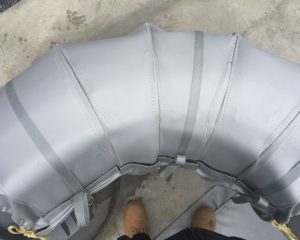
The best way to stop condensation from forming on pipes is to prevent the warm, humid air from coming into contact with the chilled pipe’s outer surface. Removable reusable insulation blankets, like Thermaxx Cold Insulation Jackets, are designed to fit snugly and keep the ambient air temperature and humidity from affecting your pipe.
Insulative materials trap air within their fibers to prevent it from reaching the other side. An insulated cold water pipe's surface will be safe from the warm air around it. The warm air never comes into contact with the pipe's cold surface, meaning the air holds onto its water molecules.
The Best Insulation for Cold Water Pipes
Installing reusable pipe insulation can be an excellent decision for your company. The key is to choose the right type of insulation for your needs. Cold water pipe insulation should possess specific characteristics that allow it to mitigate moisture, transcend temperatures, and stand the test of time. Here are some features to look for in cold water pipe insulation:
- Temperature performance: Choose insulation that accommodates any high temperatures your cold water pipes experience and keeps your pipes' contents cool. Cold weather is essential to consider, too — you may need insulation that will prevent cool fluids from freezing in frigid conditions.
- Moisture resistance: Cold water pipe insulation attempts to reduce condensation in warm environments, but it should be able to handle any droplets that form. Moisture-resistant insulation will provide consistent protection instead of faltering at the first sign of water.
- Mold and mildew resistance: Along with moisture can come mold and mildew. Choosing an insulation material the will resist microbiological growth will ensure that your insulation stays safe and protected for years to come.
- Ease of use: Cold water insulation should help your operations, not hinder it. Reusable insulation is ideal because it's easy to reinstall after any maintenance is performed, ensuring that it continues to work as intended, rather than potentially leaving components uninsulated for extended period of time.
- Application specificity: Every cold water pipe system is unique, so it is important to choose insulation tailored to your setting. Thermaxx customizes reusable insulation to meet specific size and condition parameters or specifications.
Reusable Insulation Jackets for Cold Water Pipes
Thermaxx produces job-specific cold water pipe insulation that prevents and resists moisture. We offer numerous products that simplify the process of insulating cold water pipes in basements, outdoor areas, and any other unconditioned spaces.
Reusable insulation blankets, like Thermaxx Cold Insulation Jackets, are designed to fit snugly and keep the ambient air temperature and humidity from affecting your pipe.
If traditional pipe insulation gets wet from pipe sweating or water spillage, it can trap the water and cause CUI (Corrosion Under Insulation). This is a problem that often goes undetected, as it is hidden beneath the insulation. It is discovered only during inspections, or when a leak occurs due to corrosion.
Thermaxx Cold Jackets are built with hydrophobic aerogel insulation and drainage vents that allow moisture to escape at temperatures ranging from -328 up to 257 degrees Fahrenheit. You can also select materials such as flexible closed cell sheet insulation for temperatures dropping below freezing.
Thermaxx Cold Insulation Jackets are also easily removed, allowing for faster and more regular inspections of your pipes and equipment.
Reusable Antifreeze and Outdoor Pipe Insulation
Condensation is a common source of water pipe damage, but freezing is another pressing issue. The fluid running through your pipes may freeze when exposed to low temperatures. Freezing can also occur when condensation accumulates just before a significant temperature decrease. Frozen pipes inhibit water flow and may expand to the point of bursting. Each scenario will cost you time and money, but reusable insulation can prevent pipes from freezing in the first place, eliminating the need for repairs.
Our antifreeze outdoor pipe insulation jackets feature materials like aerogel or closed cell insulation to ensure internal temperature consistency when the air around the pipe gets colder. We'll customize insulation that fits your outdoor pipes so you avoid backups and corrosion while extending the lifespan of equipment like water meters and release valves.
Can Hot Water Pipes Sweat?
Yes, hot water pipes will sweat sometimes. Again, the condensation is caused by the difference in water temperature versus air temperature and humidity. If the hot water pipes are exposed to cold air, they might sweat.
Sweating hot water pipes are usually much less common than cold ones. If it occurs, it will often be in the pipes closest to the building's perimeters.
Contact Thermaxx to Prevent Condensation on Your Cold Water Pipes
Ready to see how combating corrosion and freezing with moisture-resistant pipe insulation can save your organization money? Learn more about Thermaxx Cold Jackets or Contact Us today to discuss custom pipe insulation options for your facility!
Related Posts & Helpful Resources:
- Cryogenic Insulation Jackets
- Benefits of Thermaxx Jackets
- The Process Of Thermaxx Jackets' Insulation Projects

Thermaxx Jackets
Thermaxx Jackets was founded over 25 years ago with a single purpose: to help our clients save energy with removable insulation blankets when traditional stay-in-place insulation is not practical. Our dedication to this purpose has resulted in a long list of customers who have saved money thanks to Thermaxx Jackets! Combining expertise in heat loss, wireless monitoring, insulation design, and several other disciplines, we’ve become the #1 provider and fabricator of removable insulation jackets and covers. The Thermaxx Sales and Service teams are experienced and trained to provide clients with the most timely and cost-effective solution.
Categories
- removable insulation
- thermaxx jackets
- energy savings
- savings
- energy efficiency
- safety
- pipe insulation
- energy
- case study
- insulation materials
- thermal insulation
- heat loss survey
- heat loss
- energy loss
- hot insulation
- fiberglass
- installation
- steam
- New York
- custom insulation
- NYC Case Study
- boiler
- university
- Connecticut
- reusable insulation

